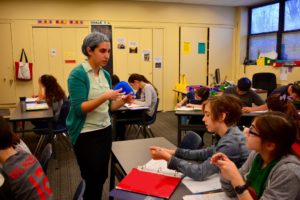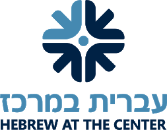Avoiding the Around and About to Teach the Text
January 6, 2016 by
 I had a Bible Professor who often said about the Biblical text, “Everything else is around it or about it. This is it.” I feel that way about the various genres of Jewish texts, both biblical and Rabbinic. For our children to be educated Jews, it is not enough for them to learn around them or about them. They need to learn them.
I had a Bible Professor who often said about the Biblical text, “Everything else is around it or about it. This is it.” I feel that way about the various genres of Jewish texts, both biblical and Rabbinic. For our children to be educated Jews, it is not enough for them to learn around them or about them. They need to learn them.
Teaching Jewish texts poses a number of challenges in Jewish day schools: limited instructional time, different levels of ability to access and interpret the texts independently, and perceived or actual lack of relevance to our students’ lives, to name a few. Conversely, the opportunities are abundant: exposing and connecting the students to the rich literary history of our people, developing their abilities to read and interpret texts throughout their lifetimes, using Jewish texts to inform their moral development and day-to-day values, having shared texts that children—no matter what their denomination or personal family practice—can unwrap and discuss, and a host of others.
At the Jewish Primary Day School of the Nation’s Capital (JPDS-NC), a pre-K through sixth-grade community school and the only Jewish day school in the District of Columbia, we confront these challenges and opportunities in a number of ways, two of which are described below. Our faculty and staff have worked particularly hard to define the reasons we teach biblical texts and the bottom line standards we expect our graduates to take with them into the future. The two major standards that we teach to at JPDS-NC are: 1. Students will become independent and literarily astute readers of the biblical text in Hebrew. 2. Students will develop a love of Torah study for its own sake and embrace it as an inspiring resource, informing their values, moral commitments, and ways of experiencing the world.
Teaching specific skills to the students so that they can access and interpret the texts, ultimately independently, and using big ideas and essential questions are some of the ways that we achieve our goals.
As we are a pre-K–6 community day school, planning to expand into middle school in the near future, one of our greatest challenges has been how to expose our children to the various biblical genres in addition to the multiple genres of rabbinic literature and how to balance the needs of the different students. For some of our children, elementary school serves as the foundation for their continued intense Jewish learning; for others, graduation signals the end of their deep continuation of Limmud Torah, at least for the time being.
Our sixth-grade Judaic studies teacher, Shifra Chelst, created a curriculum that addresses these issues. The new curriculum was actually sparked by sixth graders expressing their belief that they had humash study down pat and that they “knew it all.” We brainstormed on how to disabuse them of that misconception, and based on the ideas that developed, Shifra created a curriculum that comprises 10 discrete units, each focusing on a different genre of Judaic literature. The themes of all 10 units relate to the grade-level intention of “insiders and outsiders,” a topic that nascent middle-schoolers relate to and concern themselves with continually. Even if we do not get to all of the units, the children will be exposed to a wide variety of Judaic literature in a thoughtful, reflective manner.
In addition, we have developed a culminating unit called Derekh Hayashar (The Way Forward) in which we explore the theme of chesed using the various genres, presented chronologically, together with some non-Jewish materials such as the Code of Hammurabi and the Sermon on the Mount. The theme of “reaching out to help others” is an important one for rising seventh graders, and the unit draws together everything the students have learned over the course of sixth grade.
Our curriculum has succeeded in instilling in our graduating students the notion that there is a whole lot more to learn in terms of Judaic literature, whether or not they are continuing their studies at a Jewish day school. It also has opened their eyes to more advanced philosophical and theological questions. One came up in teaching the Code of Hammurabi. The teacher explained that frequently, “the gods” were invoked to put an extra imprimatur on the code to assure increased compliance with the rules. One child questioned whether this also applied to the Torah. Although this is perhaps not the question we were seeking or expecting, it opened a rich line of discussion about the authority of the Torah.
And, after all, isn’t stimulating deep thought to help us figure out our lives what teaching “it,” the text, is all about?






